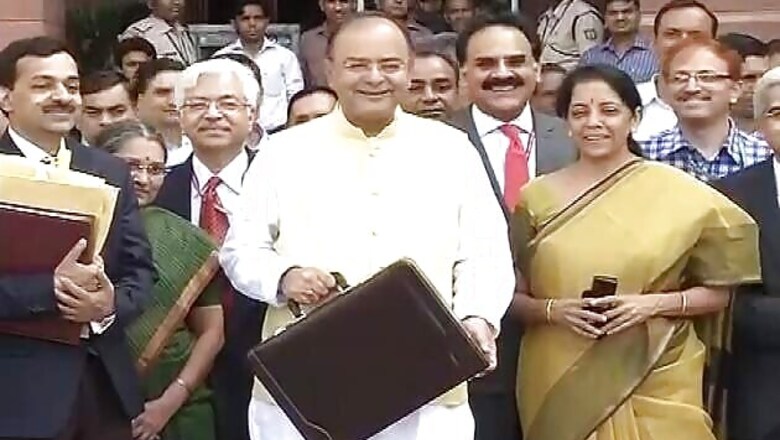
views
Finance Minister Arun Jaitley will on February 28 present his first full-year budget, seeking to put Asia's third-largest economy on a path of 7-8 per cent growth over the next two years.
The 2015/16 budget is billed as a "make-or-break" event for Prime Minister Narendra Modi's eight-month-old government. For now, investors are giving him the benefit of the doubt, lifting the BSE Sensex by more than 5 per cent in the current year to date.
Here are some of the reforms investors and economists expect from the budget:
FISCAL CONSOLIDATION
Jaitley is expected to stick to the fiscal consolidation path unveiled by the last government in 2012, with the deficit target for 2015/16 and 2016/17 at 3.6 per cent and 3.0 per cent of gross domestic product, respectively.
SUBSIDY REFORMS
Investors hope the budget will follow up the recent scrapping of price caps on diesel with similar reforms for other subsidised fuels. Jaitley is also expected to initiate steps to trim spending on food and fertiliser subsidies.
WELFARE REFORMS
The budget is expected to streamline flagship welfare schemes like the National Rural Employment Guarantee Act (NREGA), the largest public works programme in the world.
The scheme provides jobs for 50 million households and is credited for dramatically reducing distress sales of land in years of drought. But it is also a heavy burden on taxpayers and riddled with corruption.
HIGHER CAPITAL SPENDING
Investors are looking out for shifts from current to capital expenditure. In a report to parliament in December, the finance ministry called for higher public investment to offset weak corporate spending. The ministry reckons India needs to invest $800 billion to clock 7 per cent growth a year.
Jaitley is expected to create fiscal space to spend as much as $50 billion in the year to March 2016 on new roads, rail lines, ports and irrigation facilities.
MANUFACTURING BOOST
The 2015/16 budget is expected to give a big push to Modi's 'Make in India' campaign, with tax breaks and other incentives for several sectors. The campaign is a centrepiece of the Indian leader's plan to create jobs and rejuvenate the under-performing economy.
GOODS AND SERVICES TAX
Jaitley has promised to implement a nationwide Goods and Services Tax (GST) from April 1, 2016. He introduced a bill in parliament in December to rationalise state and central indirect taxes into a harmonised sales tax.
However, its passage depends on whether he can honour his promise to compensate states for potential revenue losses. The budget is expected to detail the promised compensation package.
GENERAL ANTI-AVOIDANCE RULES (GAAR)
Investors are seeking a new timeline for the implementation of General Anti-Avoidance Rules (GAAR), aimed at companies and investors routing money through tax havens such as Mauritius. The rules were scheduled to come into effect from April 1, 2014, but have been deferred to 2016 to prevent any investor backlash.
BANKING REFORMS
Jaitley is expected to offer a roadmap to improve the health of ailing public sector banks, which have been hobbled by bad loans and corporate governance issues.
At a one-of-a-kind huddle with the government last month, state-run banks had suggested setting up a holding company to manage them and suggested reducing state ownership to below 51 percent.


















Comments
0 comment